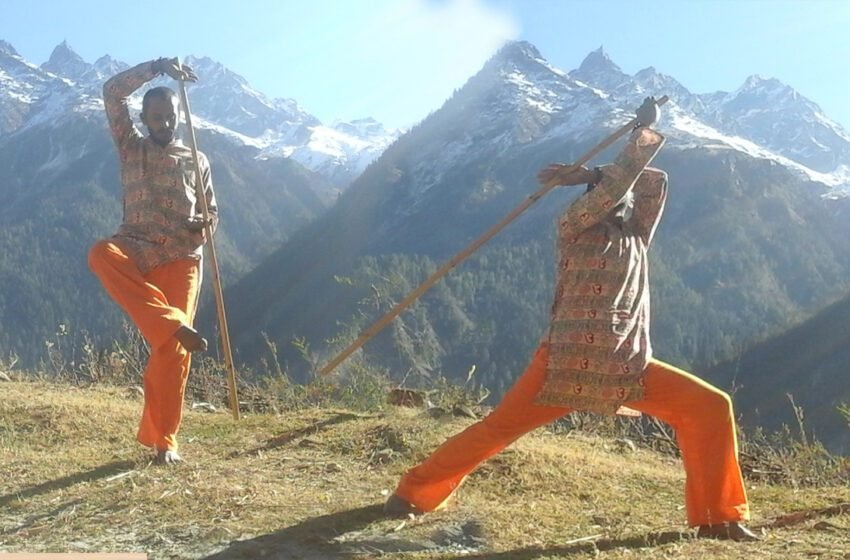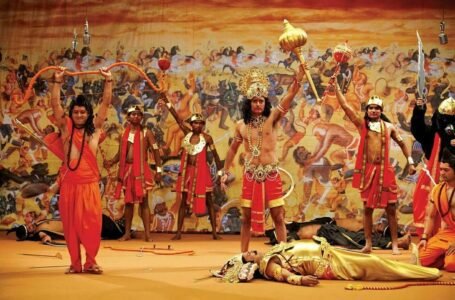KUTTU VARISAI – ‘Empty hand Combat,’ Dravidian form of Martial Arts

Kuttu Varisai is often confused with the self-defense art of Silambam. This is not the truth. They do resemble but not entirely. Where Silambam uses various weapons like swords, shields, sticks, etc, Kuttu Varisai is the unarmed component of Silambam. It is a Dravidian martial art form which belongs to the state of Tamil Nadu. The migrants from Tamil Nadu who settled in Malaysia and North-East of Sri Lanka also perform this art. If translated directly into Tamilian, the term means ‘empty hand combat.’

If we go back in time and try to find its roots, we would find references to martial arts from 2 B.C.E to 1 B.C.E in Sangam literature. The other name used for Kuttu Virasai is Kai Silambam. The term again translates into ‘hand silambam’. Another translation made from the two words is a sequential order of punches.
Techniques involved in the practice of this martial art involve throws and locks, striking, and grappling. There is a lot of use of animal-based movement and stances like that of an eagle, monkey or snake, tiger or elephant. Every part of the body is used from fists to elbows to feet, and knees.
Every student of Kuttu Varisai has to pass many levels to become an expert or a master in art. There is a lot of focus on the footwork of the students. Footwork is an essential part of training, both, in Silambam as well as Kuttu Varisai. When mastered, this footwork helps in punching blows with the maximum force. The footwork is known as Kaaladi in Tamil. The training of the bare hands is done in such a way that the wrist and the hands move in a manner that they act as a precursor to Silambam’s stick technique. There are sixteen types of footwork but the emphasis on four of them are given the most. The hands along with the footwork should be in conjunction. The reason for this is that this allows the practitioner to get a better grip and usage of the stick used in Silambam. The advancing and retreating using the footwork helps to be quick enough to penetrate the opponent’s territory and punch a blow or hit them with a stick. The same swiftness helps the practitioner to receive non-lethal blows and continue fighting with minimum damage to the body. Apart from the traditional Kuttu Varasai exercises, stretching, breathing exercises, and gymnastics is also conducted to improve the core of the practitioner and to make their bodies more agile.
The locking technique is known as poottu and saves the fighter from getting affected by the blows or the attacks of the opponent. The advantage of using this technique is that one not only protects himself or herself but also disables the weapon that is being used by taking it out of their hands.

One of the unique features of Kuttu Varisai is the salutation known as Mariyathai Seluttuthal. It is also known as Anjali Mudra and is performed by doing both hands. It is also known commonly as ‘Namaste’. One is supposed to bow down and this action is part of the mudra.
The technique wherein pressure points are attacked makes the opponent drop his or her weapon is also a part of Kuttu Varisai. The technique is known as Varma Adi or Marma Adi. On resorting to this technique, the opponent is compelled to drop his or her weapon and accept defeat. Unlike shown in the movies, this technique only works after a while. First the pressure points are attacked, then after a while the attack works and the opponent succumbs to the pain caused in the respective points.
Just like Silambam, those who practice Kuttu Varasai have to wear a costume. The costume must have been seen by the audience across historical movies. There is a chest guard and a langot along with a sleeveless vest and canvas shoes. There are many who decide to fight without shoes as well as they get a better footing and stance barefoot. The langots can be of various colours.

As Kuttu Varisai is a part of Silambam, it enjoys the status of an internationally recognized martial art by the United Nations. Kuttu Varasai comes under the jurisdiction and administration of the World Silambam Federation. The History TV 18 show ‘OMG, Ye hai Mera India’ also showcased martial art in one of their episodes. Kuttu Varisai is not only a good way to stay fit but also a must-learn self-defence form. If and when a situation pops up where one is not able to find a stick-like weapon or in modern times people do not carry weapons around, Kuttu Varisai comes in handy. One’s cardiovascular system stays in check and the physical workout also helps in keeping the mind fit. The intense mind and body coordination that is required between the hands and the muscles make the muscles more flexible. Just like any other sport or physical activity, Kuttu Varasai also helps in shedding extra weight by burning calories.
In this day and age just like a lot of fashion trends are making a comeback, the same is with traditional martial arts. As it is that these forms and many other art forms suffer during the British Raj. They banned different forms of self defense and hunted down those who trained or practiced them. Nonetheless, these art forms persisted and have been passed down many generations. Today, the world cup is organized in Malaysia, and participants from around the world take part in it. Not only participants, but spectators from around the world also attend this fest. The best part is that there is a majority of youth taking part in it. Just like Silambam, the Tamil actor Dhanshika is a practitioner of Kuttu Varisai. She has gone on record and talked about the health benefits of martial art. Not only the health benefits, but she also talked about how it is a form of physical meditation for her.


